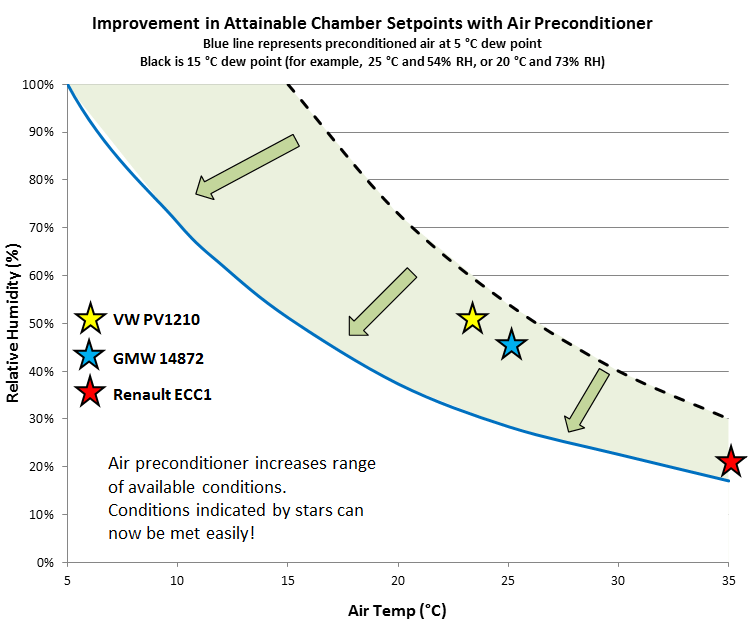Why is an air preconditioner used with the Q-FOG CRH Cyclic Corrosion Tester?
Blog
Last Updated 2020
Q-Lab includes an air preconditioner as a standard accessory with every Q-FOG CRH tester. Not all manufacturers do this, so we often are asked why it is necessary. In short, the Q-FOG CRH air preconditioner ensures reliable, stable, repeatable chamber conditions and precise control of transitions. These are necessary elements for achieving reliable corrosion test results.
There are three major benefits of the air preconditioner:
- Cooling and dehumidifying laboratory air ensures consistent compliance with “ambient” dry-off conditions in standards such as VW PV1210 and GMW 14872.
- The air-preconditioner reduces the dew point of air entering the chamber by drying the air. This allows the tester to comply with the Renault ECC1 cycle or others with low dew points.
- Control of the air entering the chamber enables very precise linear transitions between conditions, which promotes test repeatability.
The graph below is an example of how the drying and cooling action shifts the range of available tester conditions. This example is for a well-controlled lab environment but a similar improvement is realized in hot, humid laboratories. The preconditioner shifts the incoming air dew point from the dotted black line to the solid blue line, making available the region shaded in green. This region includes several key “ambient” setpoints from major corrosion standards.

The air preconditioner removes repeatability issues associated with corrosion testing. Since the air coming from the air preconditioner to the tester has consistent temperature and relative humidity conditions, the Q-FOG CRH enables precise control of test conditions and linear ramping that is consistent from test to test.